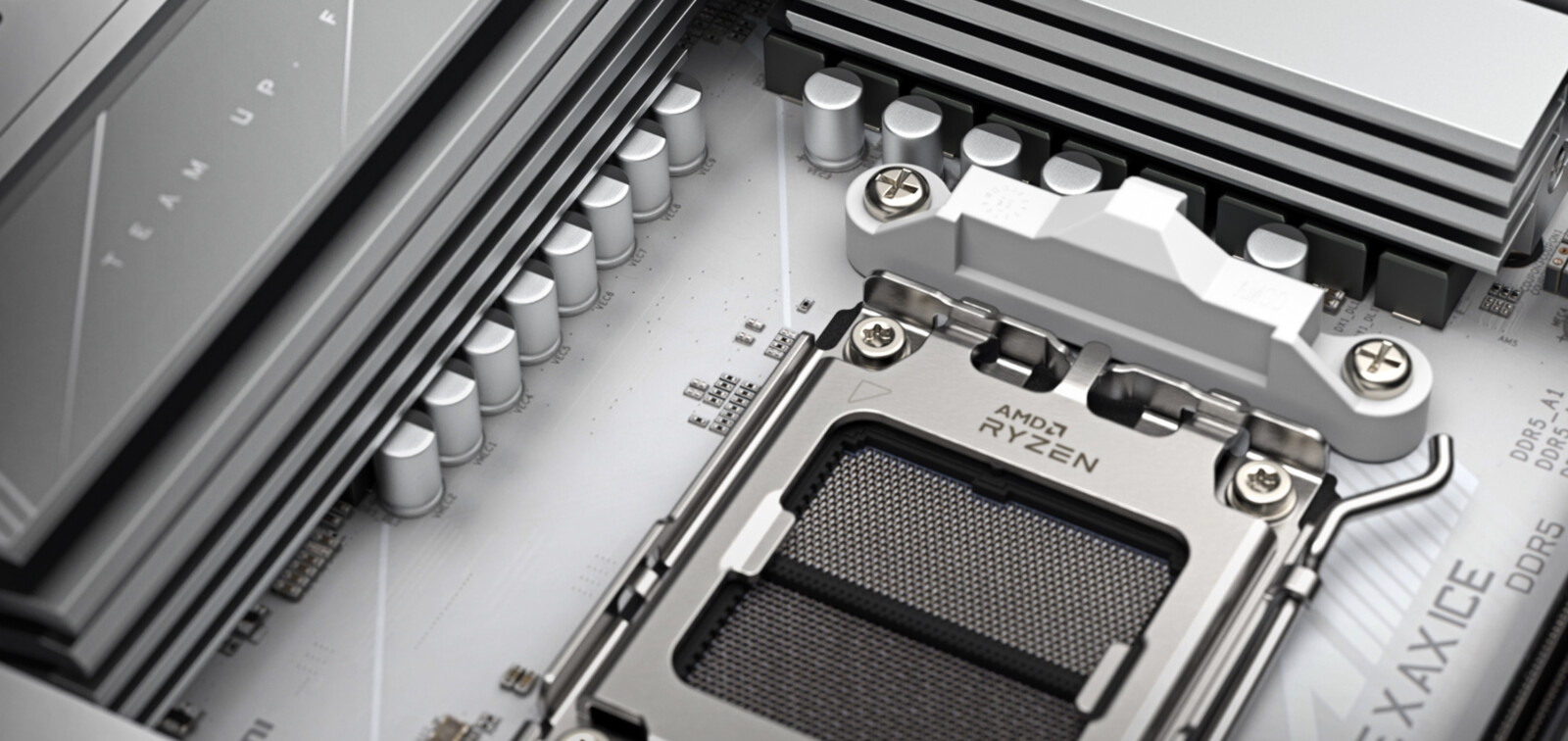Motherboard Buying Guide: How To Choose One In 2024?

After selecting the CPU, GPU, and SSD for your PC build, the motherboard becomes another critical component since it allows every other part to communicate with each other. However, navigating the complex terminologies associated with motherboards can often lead to overspending, much like with processors. Therefore, here is a comprehensive guide on everything you need to know before buying a new motherboard.
Factors to consider before buying a motherboard
While it’s impossible to cater to the needs of every individual, there are specific factors to consider before making a choice. These include:
1. CPU socket

The CPU socket is the most important factor when buying a motherboard. This is because both AMD and Intel have proprietary sockets that they replace every few years, necessitating updates as older motherboards become incompatible with newer CPUs. Currently, AMD’s AM5 and Intel’s LGA1700 cater to the Zen 4 and Alder Lake/Raptor Lake processor generations, respectively.
However, this approach also complicates the PC upgrading process for someone who wants to upgrade their CPU, as they must now invest significantly more in a new motherboard as well.
2. Form Factor

Another significant consideration is the form factor, as the case you plan to use will determine the type of motherboard you can choose. Motherboards come in four different sizes: E-ATX (Extended ATX), standard ATX, Micro-ATX, and Mini-ITX.
E-ATX caters to high-end builds and includes several ports and expansion slots. However, it also requires a lot of space, making it suitable only for larger cases. On the other hand, standard ATX represents the general form factor, including all the standard ports, while Micro-ATX trims down both size and slots. Finally, Mini-ITX caters to compact PCs and small case builds.
However, it is important to note that if you’re planning to build a compact PC, consider the size of the GPU before investing in the motherboard.
3. Number/Type of Slots

Since a motherboard is the central hub for all other components, choosing the right one that supports all other items becomes crucial. For example, if you already have an Intel 13th-gen system but want to upgrade to DDR5 RAM, then you will also have to check if your motherboard can support DDR5 RAM or not.
Similarly, SSD slots are another crucial element. While most modern motherboards come with M.2 SSD slots, some also include SATA slots. Moreover, users should ensure that their motherboard supports the latest PCIe 4.0 standard and multiple RAM channels.
4. Ports

Users often overlook port selection, which is another major aspect. However, as a general rule of thumb, a motherboard should include several USB 3.2 ports, USB Type-C ports, Audio ports, Thunderbolt, HDMI, DVI, VGA, DisplayPort, and Ethernet. The exact configuration of these ports varies based on different motherboard form factors.
How long do motherboards last?

The lifespan of a motherboard depends on the CPU manufacturer. Judging by the track record, AMD emerges as the clear winner. Its last AM4 socket remained relevant for over five years, enabling users to upgrade their CPUs without the need to tinker with the motherboard.
On the other hand, Intel tends to change the socket more frequently, introducing a new one every two generations. This practice makes upgrades a challenging and costly affair.
How much should you spend on a motherboard?
While the needs of specific individuals cannot be universally accounted for, a decent motherboard for both AMD and Intel CPUs can typically be acquired in the range of $100-$200. However, if you want additional features such as overclocking support, be prepared to spend upwards of $300.
Recommendations
Now that we’ve covered factors, let’s look at some recommendations to facilitate your buying journey. However, it is important to note that these motherboard recommendations are primarily tailored for gaming applications.
Intel Socket (LGA1700)
- MSI PRO Z790 (link): Supports DDR5, PCIe 5.0, M.2, USB 3.2 Gen2, and Wi-Fi 6E.
- ASRock Z790 PRO (link): Supports DDR4, PCIE 5.0, HDMI 2.1, M.2 slots, USB 3.2 Gen2, and Type-C.
- MSI MAG B760 (link): Supports PCIe 5.0, DDR4, M.2, and Wi-Fi 6






